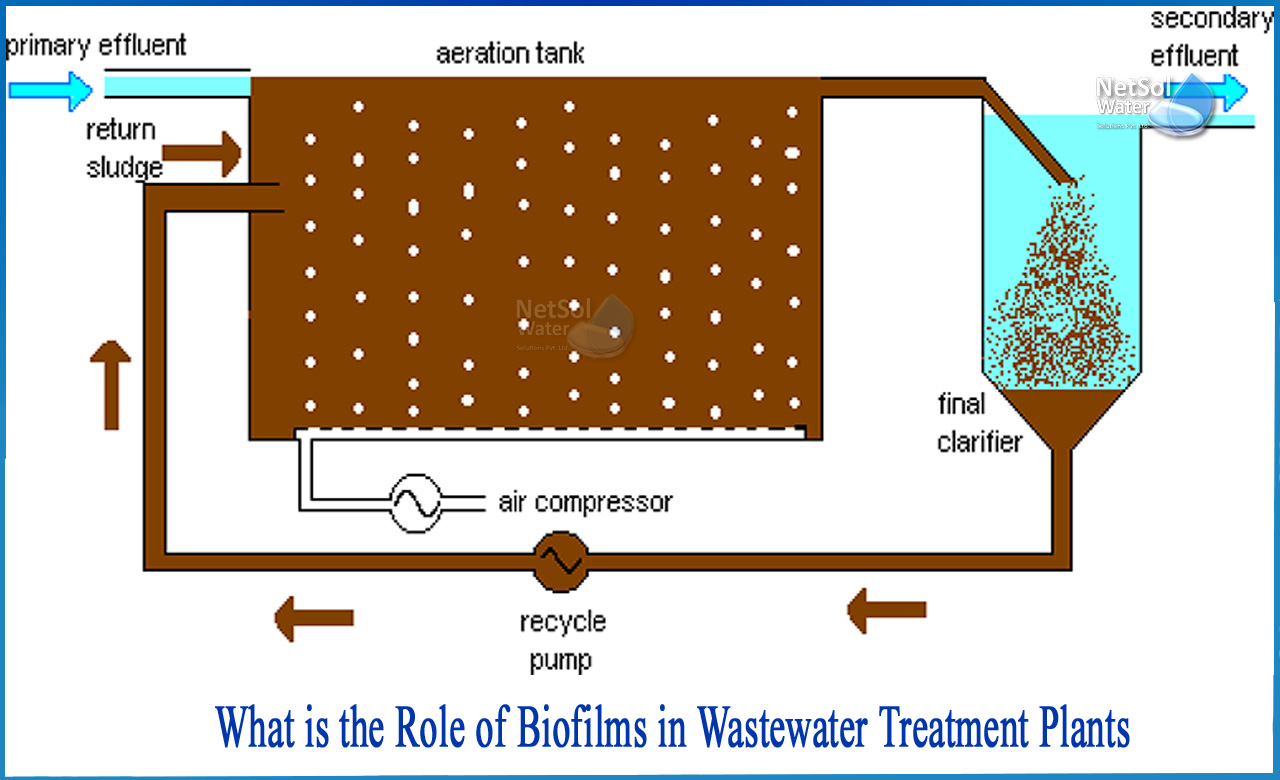What is the Role of biofilms in Wastewater Treatment Plants?
Biofilm system is a well-developed technology in which solid media is added to suspended growth reactors to provide attachment surfaces for biofilms, in order to increase microbial concentration and rates of contaminant degradation.
Biofilms take benefit of a number of eliminationmechanisms, such as biodegradation, bioaccumulation, biosorption, and biomineralization. Different nutrients, such as phosphorus and nitrogen-containing chemicals, carbonaceous materials, and trapped pathogens from the wastewater, are broken down by the microbial populations in the biofilm. The purified water from a biofilter is either released into the environment or used for agricultural and other recreational activities once pollutants have been eliminated.
Advantages of Biofilm systems
Biofilm systems have several advantages, including operational flexibility, low space requirements, lowered hydraulic retention time, environmental resilience, increased biomass residence time, high active biomass concentration, improved ability to degrade recalcitrant compounds, and a slower microbial growth rate, resulting in lower sludge production.
Biofilm formation on various filter media
The core unit of attachment growth wastewater treatment methods is the packing or filter medium. It gives a surface for the biofilm to grow on. The filter media must be long-lasting, insoluble, and chemically resistant. It is chosen based on size, porosity, density, and chemical and erosion resistance.
Traditional Methods of biofilm analysis
The weight of a biofilm is calculated
A digital weighing balance can be used to calculate biofilm weight in terms of dry and wet weight. After a mild rinse with distilled water, the biofilm's wet weight is calculated. However, the dry weight of the biofilm is evaluated by drying it in a laminar flow under aseptic circumstances until the polypropylene and polystyrene filter media reach a consistent weight. Natural filter media, such as rock, granite, or stone media, on the other hand, should be dried to a constant weight in a 60°C oven. The difference between the weight of the medium with biofilm and the weight of the medium without biofilm is then used to compute the weight of the biofilm.
Determining the activity of biofilms
The rate of conversion of a given substrate following inoculation with biomass seed can be used to evaluate the metabolic activity of the bacteria that make up biofilms. The physiological activity of Nitrosomonas spp., for example, can be measured by measuring the intensity of nitrites (NO2-N) generated in the growth medium from a known concentration of (NH4)2SO4 after a certain interval. Biofilms can also be used to assess the elimination of carbonaceous (COD and BOD) and nitrogenous (NH4N) contaminants.
The optical density of the biofilm is measured (OD)
The OD technique is also used to assess the biofilm. To ensure that any material on the filter medium supporting biofilms is removed, it is first rinsed with sterilized water. The biofilm is then sonicated for 15 minutes in 0.9 percent saline water to remove it from the filter media. Finally, using saltwater as a blank, the spectrophotometric absorbance of dissolved biofilms is measured at 550 nm wavelength (OD).
Advanced Methods of biofilm analysis
Methods of microbial fingerprinting
Microbial fingerprinting methods distinguish microorganisms and groups of microorganisms based on the distinguishing properties of a universal component/section of a biomolecule, such as phospholipids, DNA, or RNA, to offer the overall profile of a biofilm community.
Analysis of phospholipid ester-linked fatty acids (PLFA)
Phospholipids are a structural component of all cell membranes, but their kind and percentage vary by a microbe, and they degrade quickly after cell death. As a result, the amount of PLFAs in a biofilm sample is related to the amount of viable biomass.
Conclusion
Biofilm-based systems have potential advantages over other wastewater treatment technologies. Knowledge of the composition of filter media and the development of biofilms is essential for properly designing these biofilm wastewater treatment systems.
What do we offer?
If you want to know more about the role of biofilms in the wastewater treatment systems, then you can have an expert solution upon contacting Netsol Water, a leading manufacturer of Industrial and Commercial Water Treatment Plants and Wastewater Treatment Plants, among other services. Our treatment systems are very effective at removing all types of chemical, physical, and biological pollutants.
Netsol Water is Greater Noida-based leading water & wastewater treatment plant manufacturer. We are industry's most demanding company based on client review and work quality. We are known as best commercial RO plant manufacturers, industrial RO plant manufacturer, sewage treatment plant manufacturer, Water Softener Plant Manufacturers and effluent treatment plant manufacturers. Apart from this 24x7 customer support is our USP. Call on +91-9650608473, or write us at enquiry@netsolwater.com for any support, inquiry or product-purchase related query.



